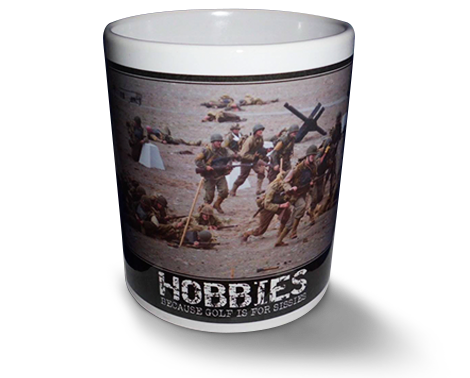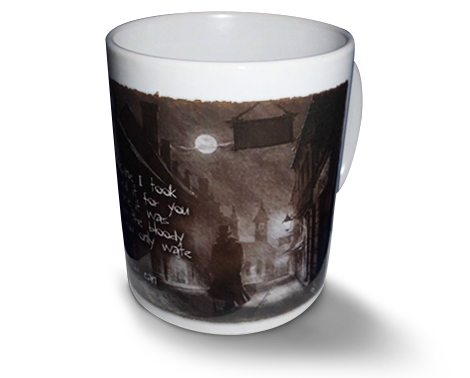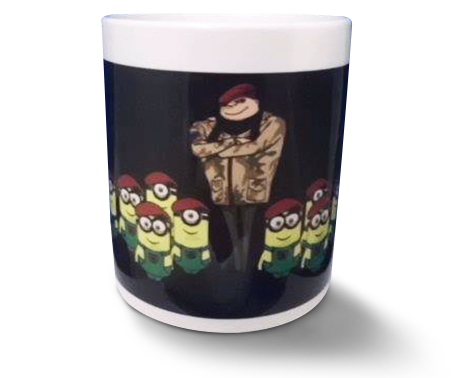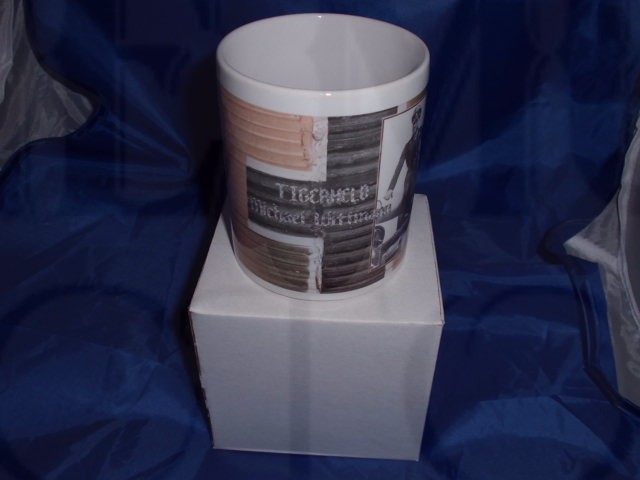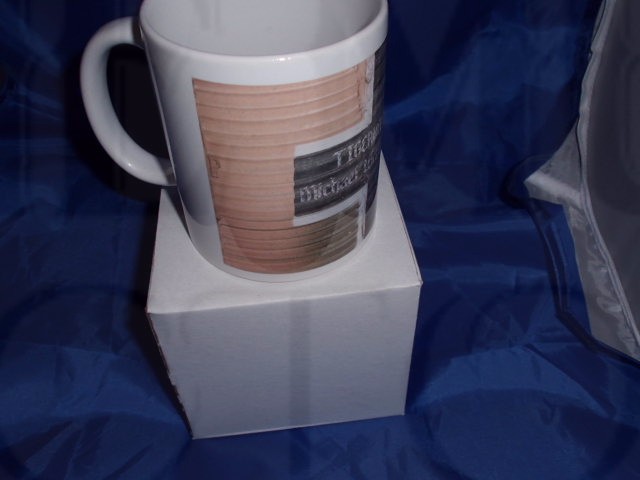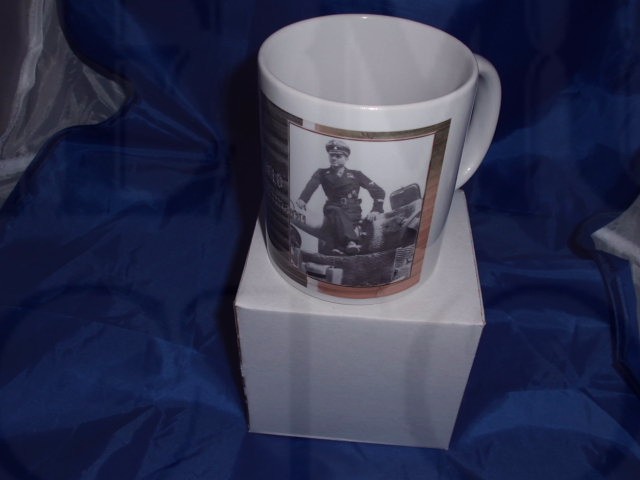Michael Whittman On His Tiger Tank military mug
11oz mug
Michael Whittman On His Tiger Tank
Between the myth and reality lies a figure of great importance in the history of armored warfare. Michael Wittmann, the most successful panzer ace of the Second World War and in the history of warfare was a charismatic person and his accomplishments on the battlefield were often met with praise. Before he became the famous Ace, he served as a private, joining the Army in 1934. After two years of service in which he gained the rank of non-commissioned officer, Wittmann joined the SS and later applied for the newly-formed 1st SS-Panzer-Division Leibstandarte SS Adolf Hitler where he acquired his driver training. After participating in the occupation of Austria and Sudetenland, he became a Nazi Party member.
1. First Years of Action
Even though Wittmann showed enthusiasm and ambition to be a tank driver, due to his rank and inexperience (and despite his talent), he was attached to a recon unit within the 1st SS-Panzer Division. He was given command of an armored car Sd.Kfz.232 (a six-wheeled heavy armored car).
As the Liebstandarte SS was initially formed as Hitler’s personal bodyguard unit, its tank divisions were considered elite. The unit comprised several future tank aces such as Hannes Philipsen and Helmut Wendorff. Wittmann earned their trust and respect, even though he was only operating as a recon vehicle driver. Wittmann went through the Polish campaign as part of the 17th Panzer Scout Company of the Liebstandarte SS. After Poland, he received additional training in Berlin and was transferred to the SS-Sturm-Batterie (assault gun battery – Sturmartillerie) of LSSAH, equipped with Sturmgeschutz III assault guns. It was from this point on that Wittmann showed his miraculous skill which would launch him into legend.
After a successful campaign in the Balkans, where Wittmann proved his value driving a Stug III (especially in Greece), his division was transferred to assist the German troops on the Eastern Front. Only a month into the campaign, he was awarded the Iron Cross Second Class for superb service against enemy tanks. Wittmann was wounded but refused to abandon the battleground, which won him a Wound Badge. His Iron Cross became First Class after knocking out 6 Soviet tanks in a single engagement. He advanced through the ranks and was offered additional training after which he was finally introduced to his weapon of choice ― the PzKpfw VI Tiger.
He returned to the battlefield in 1943, right on time to participate in the biggest tank battle in history ― The Battle of Kursk, or as the Germans called it ― Operation Citadel. His death count began to rise. Wittmann destroyed 12 Soviet T-34 tanks in the first day alone. On this occasion, he rescued Helmut Wendorff and his squad who were pinned down by the Red Army armor. This was on July 5, 1943. The battle which included the bloody battle for the city of Kharkov ended on July 17 and Wittmann’s score included 30 tanks and 28 anti-tank guns.
Michael Wittmann wasn’t the only one contributing to the success and superiority of German armor ― he was always surrounded by a hand-picked top notch crew. Even though he changed a number of crew members, he spent most of the war accompanied by his aim-gunner, Balthasar “Bobby” Woll. Woll was famous in the German Army, as much as Wittmann himself.
Woll’s ability to shoot targets while the tank was moving at high speed was astonishing. Wittmann and Woll proved to be quite a team. They spent most of their time on the Eastern Front, acquiring kills on a daily basis. The two were close friends and Woll even served as a witness to Wittmann’s wedding. Balthasar Woll was awarded Knight’s Cross of the Iron Cross in 1944. Soon after, he was given command over a tank of his own. He was seriously wounded in 1945, in France when his tank squadron was bombarded by Allied planes and decimated. Woll was in a hospital when the war ended. Afterward, he became an electrician in West Germany. He died in 1996.
Wittmann earned the nickname The Black Baron, as a reference to Manfred von Richthofen, who was known as the Red Baron. This nickname didn’t only reflect his success on the battlefield, but also the chivalry that he practiced. There is an anecdote stating that Wittmann knocked out a Soviet T-34 on one occasion and the enemy crew was on fire as they bailed out of the flaming hull of the tank. Wittmann stopped his tank and ordered his men to assist the enemy crew covering them with blankets in order to extinguish the fire. After it was all over, the two sides parted, both preserving their military honor.
The mugs we use are top quality bright white, Orca coated, and are Dishwasher and Microwave safe, the high quality images are bonded into the surface of the mug, and do not fade or peel off like transfers
GREAT FOR GIFTS, BIRTHDAYS, OR JUST TO ADD TO YOUR MEMORABILIA COLLECTION.
The artwork is created in our offices/workshop, and we are available for custom work. These designs are individually made, not mass produced.
Please note that I take great care in packaging the mugs they are sent in a polystyrene mug box designed to specifically for posting mugs hence the postage costs

